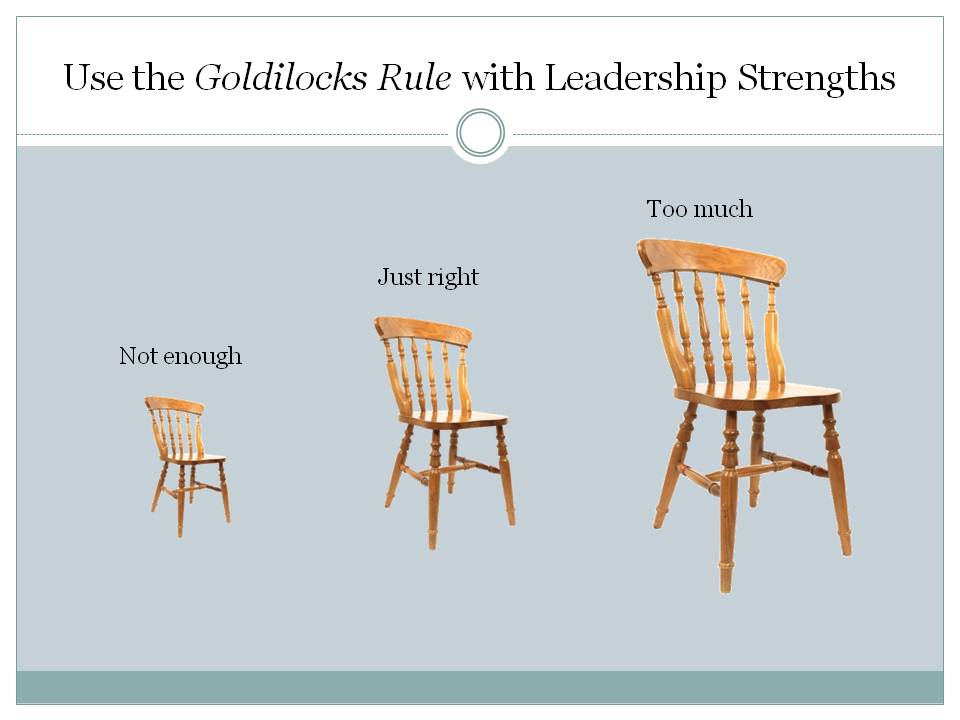Remember the book Now, Discover Your Strengths? Published in 2001, the book by Marcus Buckingham and Donald Clifton (a pioneer of the “Positive Psychology” movement), this book put the idea of focusing on one’s strengths in the limelight.
I support the basic premise – invest in building one’s natural talents rather than focusing solely on improving one’s weaknesses (those areas one is not naturally “good” at).
As often happens, when the “strengths movement” became main stream and gathered momentum, a few of the nuances were left out of the original premise. People started interpreting the message to be, “focus only on your strengths and leave the other talents to people who are better equipped.”
This focus leaves out a key element in personal effectiveness which is: a strength over-used can become a weakness.
No doubt you’ve seen this in action: a naturally enthusiastic sales manager tries to win over a taciturn sales prospect with fervent testimonials. Or, a highly analytical manager focuses solely on data to make a decision on an emotionally charged work challenge.
In both scenarios, the leaders described “go with what they know” – their strengths. The problem is, in the scenarios described above, their strength is actually pushing them farther away from their goal.
Harvard Business Review contributors Robert Kaiser and Robert Kaplan have been researching the role that focusing on strengths plays in leadership development. They say that many 360-degree assessments rate leaders with a five-point scale that assumes “more is better.” In their article, Don’t Let Your Strengths Become Your Weaknesses, they show the downside of focusing on solely on strengths:
We’ve seen virtually every strength taken too far: confidence to the point of hubris and humility to the point of diminishing oneself. Show us a strength and we’ll give you an example where its overuse has compromised performance and probably even derailed a career.
So what’s a leader who wants to grow professionally to do? If focusing on one’s strengths isn’t always the way to go, what is?
It comes down knowing how to apply one’s strength in just the right measure, given the context of the circumstance. Think of it as the Goldilocks Rule – not too little, nor too much of a good thing . . .but just the right amount.
So, how do you know how much is “just right?” Here are a few ideas:
- Observe how people react to when you believe strongly about something – are they “dialed in” to your passion, or are they resisting your ideas in some way?
- Ask a trusted colleague – “Can you think of any example when I need to ‘tone down’ something I’m really good at?” or, “What do you see as my top three strengths? Can you think of any times when that strength gets in the way of my effectiveness here at work?”
- Do a 360-degree feedback process. I have access to an excellent assessment that gives you feedback on “not enough”, “just right” and “please do more” on your leadership talents. Send me an email to jen <dot> people <dot> equation <at>gmail.com and we’ll talk.
Knowing your strengths is the first step in developing as a leader. Knowing how much of your strength to use in any given context is the way that you will take your leadership game to a higher level, and become the leader you were meant to be.
Disclosure: some of the links in this post are affiliate links, meaning if you click the link and make a purchase, I may be compensated.

Leave a Reply